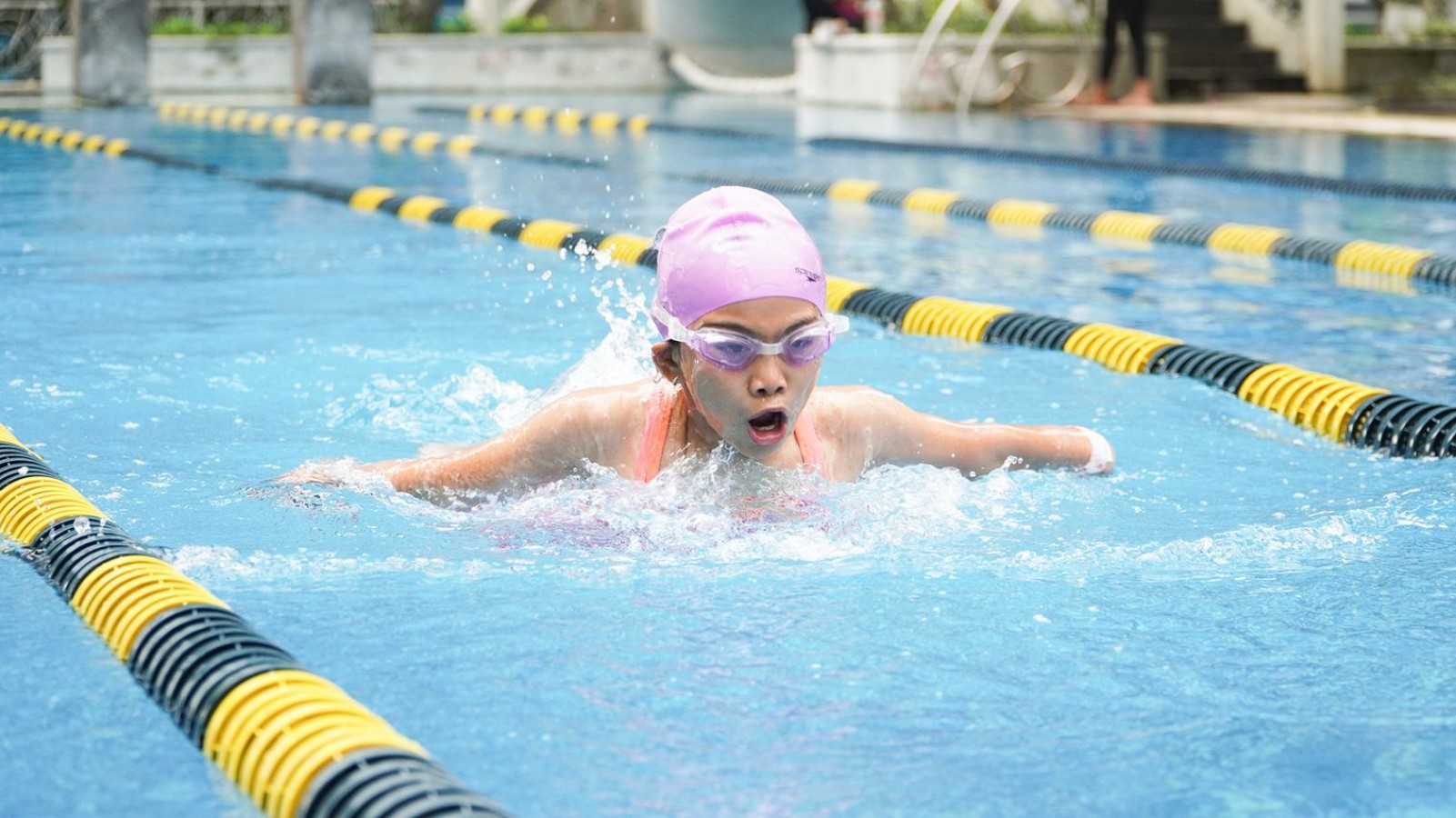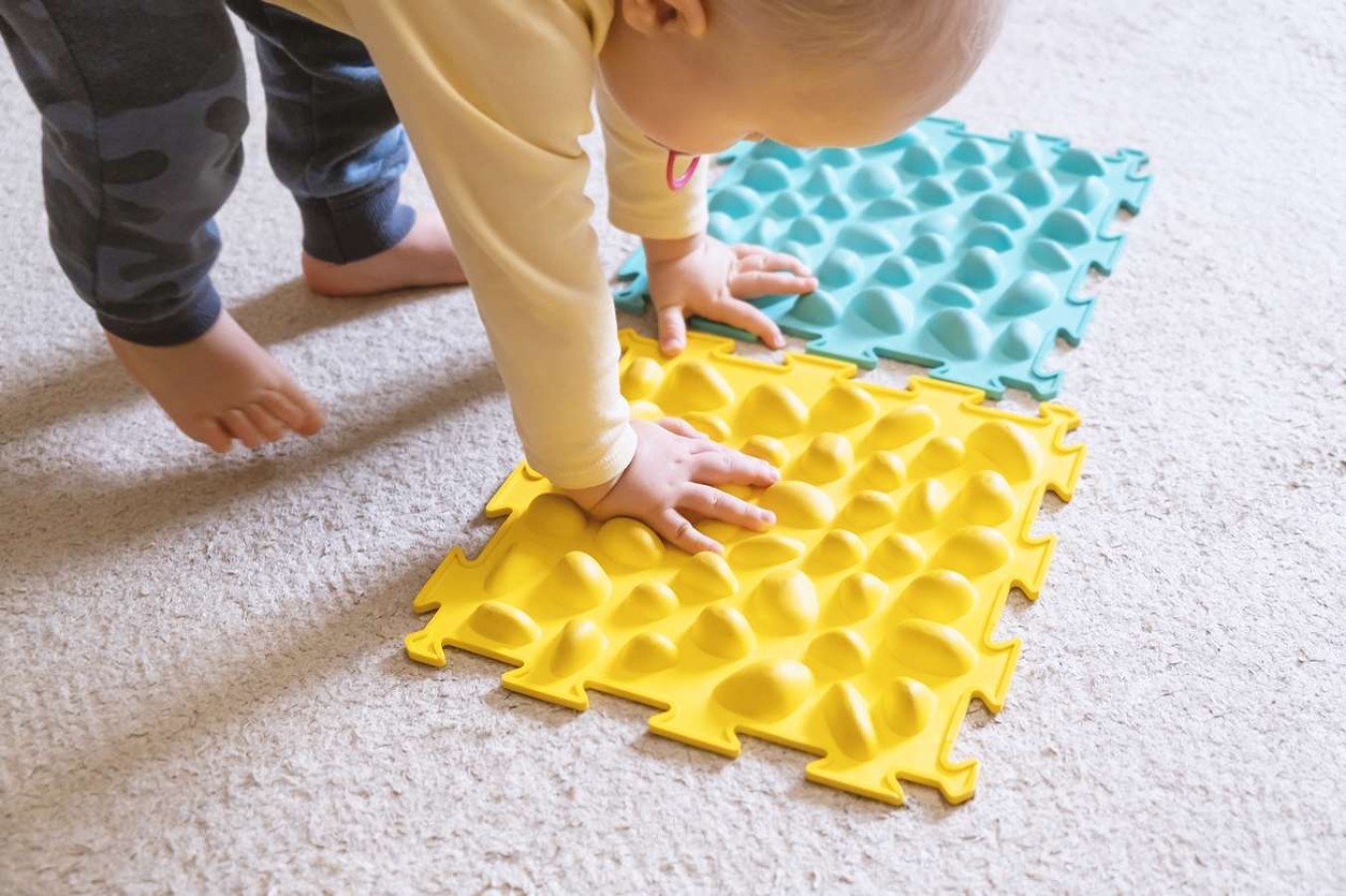Understands Breath Control in Swimming and Tips to Improve It

Mastering breath control is crucial for anyone looking to excel in swimming. Proper breath control not only enhances your performance and endurance but also ensures a more efficient and enjoyable swimming experience.
This article delves into the human respiratory system, explains why breath control is essential for swimmers, and provides practical tips to improve breath control while swimming.
The Human Respiratory System
To understand breath control in swimming, it's essential to have a basic knowledge of the human respiratory system. The primary function of this system is to facilitate the exchange of oxygen and carbon dioxide between the body and the environment. The key components include:
- Nose and Mouth: The entry points for air, which is then warmed and filtered.
- Pharynx and Larynx: Pathways that direct air into the trachea.
- Trachea: A tube that carries air to the lungs.
- Bronchi and Bronchioles: Smaller airways that distribute air throughout the lungs.
- Lungs: The main organs of the respiratory system, where gas exchange occurs.
- Diaphragm: A muscle that helps in the expansion and contraction of the lungs during breathing.
When you breathe in, the diaphragm contracts, creating a vacuum that pulls air into the lungs. Oxygen from the inhaled air passes through the alveoli (tiny air sacs in the lungs) into the bloodstream, while carbon dioxide from the blood is expelled from the body when you exhale.
Why Breath Control is Important for Swimmers
Breath control is a cornerstone of swimming proficiency, impacting everything from technique to stamina. Let's break down the key reasons why breath control is so important for swimmers in an easy-to-understand manner.
A. Efficiency and Streamlining
When you swim, maintaining a streamlined body position is essential for cutting through the water with minimal resistance. Proper breath control helps achieve this streamlined position by ensuring that your head and body stay aligned.
When you breathe incorrectly, such as lifting your head too high, it disrupts your body alignment and increases drag. This makes you slower and requires more energy to move forward.
B. Enhanced Endurance
Swimming can be an intense cardiovascular workout, requiring a consistent and ample supply of oxygen to your muscles. Proper breath control ensures that you are efficiently managing your oxygen intake and carbon dioxide expulsion.
This balance is crucial for maintaining energy levels and endurance, especially during long-distance swims or extended training sessions.
C. Optimal Oxygenation
Your muscles need oxygen to function properly, especially during physical exertion. Controlled breathing ensures that your muscles receive a steady supply of oxygen, which helps improve performance and delay the onset of fatigue.
When you breathe efficiently, you optimize the oxygen exchange process, which is critical for sustaining muscle activity and power.
In high-intensity swimming, like sprints or competitive races, having good breath control can be the difference between maintaining your speed and running out of steam halfway through.
D. Relaxation and Focus
Swimming can be physically demanding and mentally taxing, especially in competitive or high-stress situations. Proper breath control can help you stay relaxed and focused by preventing anxiety and panic. Deep, controlled breathing activates the parasympathetic nervous system, promoting a sense of calm and reducing stress.
E. Improved Technique
Each swimming stroke has its own breathing rhythm and technique. Mastering breath control is integral to executing these strokes correctly. For example, in freestyle, breathing involves turning the head to the side without disrupting the body's rotation.
In breaststroke and butterfly, the head lifts forward to breathe. Each stroke requires a specific pattern that, when done correctly, enhances the overall efficiency and effectiveness of the stroke.
F. Prevention of Hyperventilation and Hypoxia
Hyperventilation (rapid and shallow breathing) and hypoxia (lack of oxygen) can be dangerous for swimmers. Proper breath control helps prevent these conditions by promoting regular, deep breathing patterns.
This ensures that you are not only getting enough oxygen but also expelling carbon dioxide efficiently. Without proper breath control, a swimmer might start to panic and hyperventilate, leading to dizziness or even unconsciousness. Controlled breathing keeps these risks at bay by maintaining a steady and sufficient flow of air.
Tips to Improve Breath Control While Swimming for Children
Helping children develop good breath control while swimming is essential for their comfort and confidence in the water. Here are some detailed tips to improve breath control for young swimmers, explained in easy-to-understand language with examples.
1. Blow Bubbles
One of the easiest and most effective ways to teach children breath control is by having them blow bubbles in the water. Blowing bubbles helps kids learn to exhale slowly and steadily, which is crucial for maintaining breath control while swimming.
It also makes them more comfortable with having their face in the water. Start by practicing this in the bathtub or a shallow pool. Ask them to take a deep breath, put their face in the water, and blow out gently to create bubbles.
You can make this activity fun by pretending they’re blowing out birthday candles or using an underwater bubble blower.
2. Practice Holding Breath
Encouraging children to practice holding their breath for short periods helps them get used to the sensation and builds their lung capacity. You can turn this practice into a game by having them count how many seconds they can hold their breath while sitting or floating with their head underwater.
Gradually increase the time as they become more comfortable. This will help them feel more confident and relaxed when holding their breath while swimming.
3. Bubble-Blowing Games
Incorporating bubble-blowing games into swimming lessons keeps children engaged and makes learning breath control enjoyable. Use a floating toy or a hoop and have them blow bubbles to move the toy across the water.
You can also organize bubble-blowing races where they blow bubbles as they swim to a designated point. These games not only make practice fun but also reinforce the importance of steady and controlled exhalation.
4. Rhythmic Breathing
Establishing a breathing rhythm is vital for comfortable and efficient swimming. Help children find a natural rhythm by guiding them to breathe every two or three strokes in freestyle.
Count out loud as they swim: “One, two, breathe; one, two, breathe.” This helps them get into a regular pattern and makes breathing an automatic part of their swimming stroke.
5. Breath-Holding Challenges
Using breath-holding challenges can be a fun way to encourage kids to push their limits safely and build lung capacity. Play games like "Underwater Simon Says," where you give commands such as "hold your breath and touch the bottom of the pool" or "hold your breath and swim through a hoop."
These challenges not only make breath control practice enjoyable but also improve their ability to hold their breath for longer periods.
6. Exhalation Drills
Teaching children to exhale underwater ensures they are ready to take a quick, full breath when they turn their head above water. Have them practice blowing all their air out underwater while standing in the shallow end.
They can pretend they are a submarine releasing air bubbles before surfacing. This drill reinforces the importance of continuous and controlled exhalation, which is key to effective breathing while swimming.
7. Calm and Relaxed Breathing
Encouraging calm and relaxed breathing helps children stay focused and prevents panic. Before swimming, practice deep breathing exercises with them.
Have them sit by the pool and take slow, deep breaths in through their nose and out through their mouth, counting to three for each inhale and exhale.
This practice helps them learn to control their breathing and stay relaxed, which is essential for maintaining good breath control while swimming.
Let’s Practice Your Breath Control in Swimming!
Understanding and improving breath control in swimming is essential for mastering this vital skill, especially for children. If your children need help enhancing their breath control, one effective way is by enrolling them in the swimming program at Rockstar Academy.
Our swimming program offers a variety of classes, ranging from developmental Mom & Me classes to advanced levels. Your children will learn the basics of water safety and drowning prevention skills, essential swimming workouts, and building a strong foundation for becoming lifelong swimmers.
Additionally, by joining our classes, they will have the opportunity to compete in events and competitions such as the Elite Championships and RockOlympics.
These competitions provide an incredible learning experience, allowing students to discover their true potential in swimming. Plus, you can experience our class firsthand by signing up for our free trial class!
FAQ
How often should I breathe while swimming freestyle?
The frequency of breathing in freestyle depends on your comfort and skill level. Beginners may breathe every two strokes, while more advanced swimmers may opt for bilateral breathing (every three strokes) or even every five strokes to maintain balance and symmetry.
Is it better to breathe through the nose or mouth while swimming?
It’s generally more effective to exhale through the nose and mouth underwater and inhale quickly through the mouth when you turn your head to breathe. This method helps expel carbon dioxide efficiently and allows for a quicker intake of air.
What are some common mistakes in breath control for swimmers?
Common mistakes include holding the breath underwater, breathing too late in the stroke cycle, lifting the head too high to breathe (which disrupts body position), and not fully exhaling underwater.
How can I prevent water from entering my nose while swimming?
To prevent water from entering your nose, practice humming or gently blowing air out through your nose while underwater. Nose clips can also be helpful, especially for beginners.



